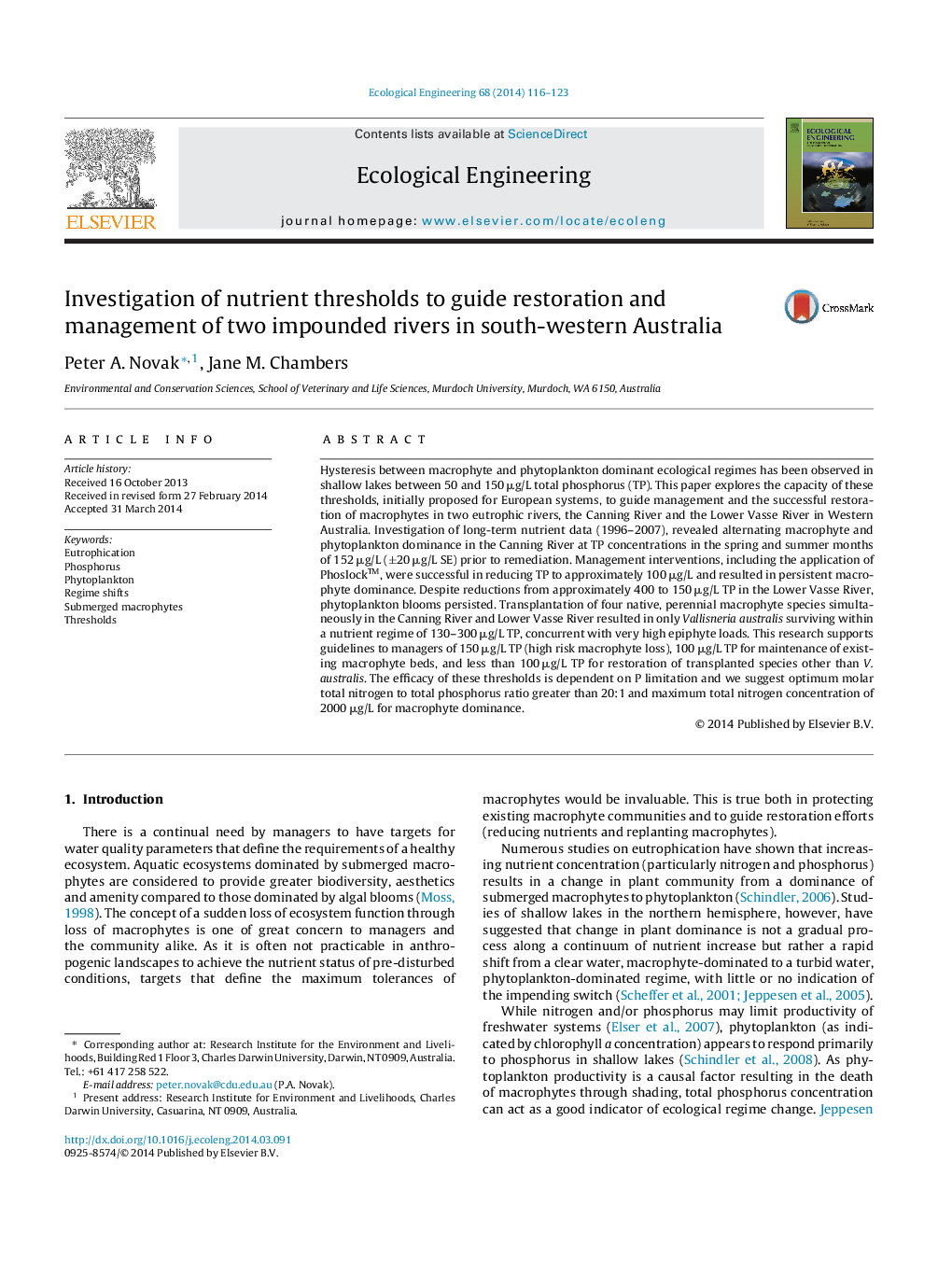| Article ID | Journal | Published Year | Pages | File Type |
|---|---|---|---|---|
| 6302295 | Ecological Engineering | 2014 | 8 Pages |
Abstract
Hysteresis between macrophyte and phytoplankton dominant ecological regimes has been observed in shallow lakes between 50 and 150 μg/L total phosphorus (TP). This paper explores the capacity of these thresholds, initially proposed for European systems, to guide management and the successful restoration of macrophytes in two eutrophic rivers, the Canning River and the Lower Vasse River in Western Australia. Investigation of long-term nutrient data (1996-2007), revealed alternating macrophyte and phytoplankton dominance in the Canning River at TP concentrations in the spring and summer months of 152 μg/L (±20 μg/L SE) prior to remediation. Management interventions, including the application of Phoslockâ¢, were successful in reducing TP to approximately 100 μg/L and resulted in persistent macrophyte dominance. Despite reductions from approximately 400 to 150 μg/L TP in the Lower Vasse River, phytoplankton blooms persisted. Transplantation of four native, perennial macrophyte species simultaneously in the Canning River and Lower Vasse River resulted in only Vallisneria australis surviving within a nutrient regime of 130-300 μg/L TP, concurrent with very high epiphyte loads. This research supports guidelines to managers of 150 μg/L TP (high risk macrophyte loss), 100 μg/L TP for maintenance of existing macrophyte beds, and less than 100 μg/L TP for restoration of transplanted species other than V. australis. The efficacy of these thresholds is dependent on P limitation and we suggest optimum molar total nitrogen to total phosphorus ratio greater than 20:1 and maximum total nitrogen concentration of 2000 μg/L for macrophyte dominance.
Related Topics
Life Sciences
Agricultural and Biological Sciences
Ecology, Evolution, Behavior and Systematics
Authors
Peter A. Novak, Jane M. Chambers,
